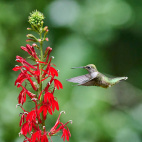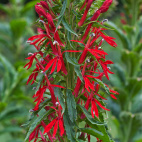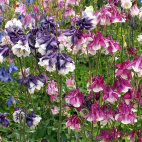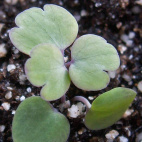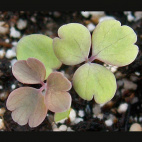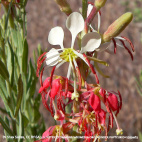Color
Availability
USDA Zone
Region
Type
Duration
Season
Germination
Soil
Sunlight
Height
Use
Narrow Your Search
Color
Availability
USDA Zone
Region
Type
Duration
Season
Germination
Soil
Sunlight
Height
Use
Wildflower Seeds - California Region
The wildflower species listed in the California Region are those that would grow well in the Central Valley as well as the coastal areas of Southern California. If you are in the mountains you might want to check out the Mountain Region, or if you are in the desert areas in the south, you'll want to look at the Dry West Region. The species of bulk wildflowers listed on this page are those that are either native here, or are annuals that grow well in this zone. There are hundreds of bulk California wildflower seeds to choose from, so please use the filters along the left side of the screen to narrow your search to match your soils, lighting, and any other attributes that you may want. If you are looking for something that is strictly native to your immediate area, you can check out the distribution map that is found on the detail pages of most of the species.
-
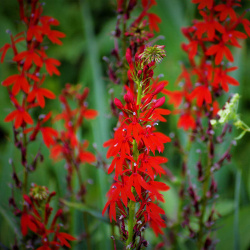 Cardinal Flower Seeds
Lobelia cardinalis
True to its name, this brilliant wildflower sports the scarlet hue of the cardinal. It has been called the reddest red in nature and flourishes in wet areas near ponds or streams. This flower is a native perennial wildflower that attracts hummingbirds and butterflies.Quick Viewx
Cardinal Flower Seeds
Lobelia cardinalis
True to its name, this brilliant wildflower sports the scarlet hue of the cardinal. It has been called the reddest red in nature and flourishes in wet areas near ponds or streams. This flower is a native perennial wildflower that attracts hummingbirds and butterflies.Quick ViewxCardinal Flower Seeds
Lobelia cardinalis
True to its name, this brilliant wildflower sports the scarlet hue of the cardinal. It has been called the reddest red in nature and flourishes in wet areas near ponds or streams. This flower is a native perennial wildflower that attracts hummingbirds and butterflies.
$3.75 Pkt - $80.00 / Oz -
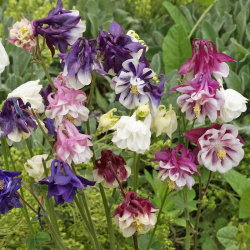 Dwarf Columbine Seed Mix
Aquilegia vulgaris
These delicate, nodding blossoms grow wild throughout much of northern Europe. This 16" dwarf variety produces a lovely mix of colors that will brighten any space!Quick View$3.48 Pkt - $12.65 / Oz
Dwarf Columbine Seed Mix
Aquilegia vulgaris
These delicate, nodding blossoms grow wild throughout much of northern Europe. This 16" dwarf variety produces a lovely mix of colors that will brighten any space!Quick View$3.48 Pkt - $12.65 / Oz -
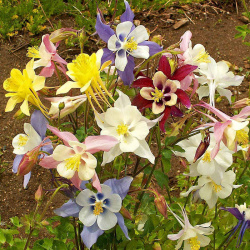 McKana Giants Columbine Seed Mix
Aquilegia caerulea
Developed explicitly for its large colorful blooms, this AAS Award winner first became available in the 1950s. A striking choice for any gardener who loves the distinctive columbine shaped flowers.Quick View$3.48 Pkt - $20.16 / Oz
McKana Giants Columbine Seed Mix
Aquilegia caerulea
Developed explicitly for its large colorful blooms, this AAS Award winner first became available in the 1950s. A striking choice for any gardener who loves the distinctive columbine shaped flowers.Quick View$3.48 Pkt - $20.16 / Oz -
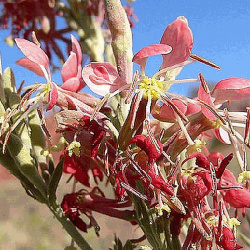 Out Of Stock
Scarlet Gaura Seeds
Gaura coccinea
These striking scarlet blossoms last for just one day, opening at the onset of the evening for pollination by nocturnal insects. The hardy perennials are very easy to grow and will spread via reseeding when given time and space.Quick Viewx
Out Of Stock
Scarlet Gaura Seeds
Gaura coccinea
These striking scarlet blossoms last for just one day, opening at the onset of the evening for pollination by nocturnal insects. The hardy perennials are very easy to grow and will spread via reseeding when given time and space.Quick ViewxScarlet Gaura Seeds
Gaura coccinea
These striking scarlet blossoms last for just one day, opening at the onset of the evening for pollination by nocturnal insects. The hardy perennials are very easy to grow and will spread via reseeding when given time and space.
$3.96 Pkt - $64.00 / Oz -
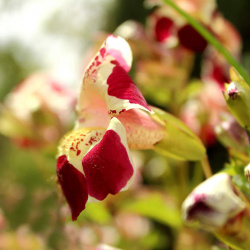 Out Of Stock
Tiger Monkey Flower Seeds
Mimulus tigrinus
This showy annual produces large, creamy yellow flowers that are splashed with red. This wildflower is a nice addition to ornamental gardens, wetlands, or bog plantings.Quick Viewx
Out Of Stock
Tiger Monkey Flower Seeds
Mimulus tigrinus
This showy annual produces large, creamy yellow flowers that are splashed with red. This wildflower is a nice addition to ornamental gardens, wetlands, or bog plantings.Quick ViewxTiger Monkey Flower Seeds
Mimulus tigrinus
This showy annual produces large, creamy yellow flowers that are splashed with red. This wildflower is a nice addition to ornamental gardens, wetlands, or bog plantings.
$3.48 Pkt - $22.17 / Oz
The wildflower species listed in the California Region are those that would grow well in the Central Valley as well as the coastal areas of Southern California. If you are in the mountains you might want to check out the Mountain Region, or if you are in the desert areas in the south, you'll want to look at the Dry West Region. The species of bulk wildflowers listed on this page are those that are either native here, or are annuals that grow well in this zone. There are hundreds of bulk California wildflower seeds to choose from, so please use the filters along the left side of the screen to narrow your search to match your soils, lighting, and any other attributes that you may want. If you are looking for something that is strictly native to your immediate area, you can check out the distribution map that is found on the detail pages of most of the species.










